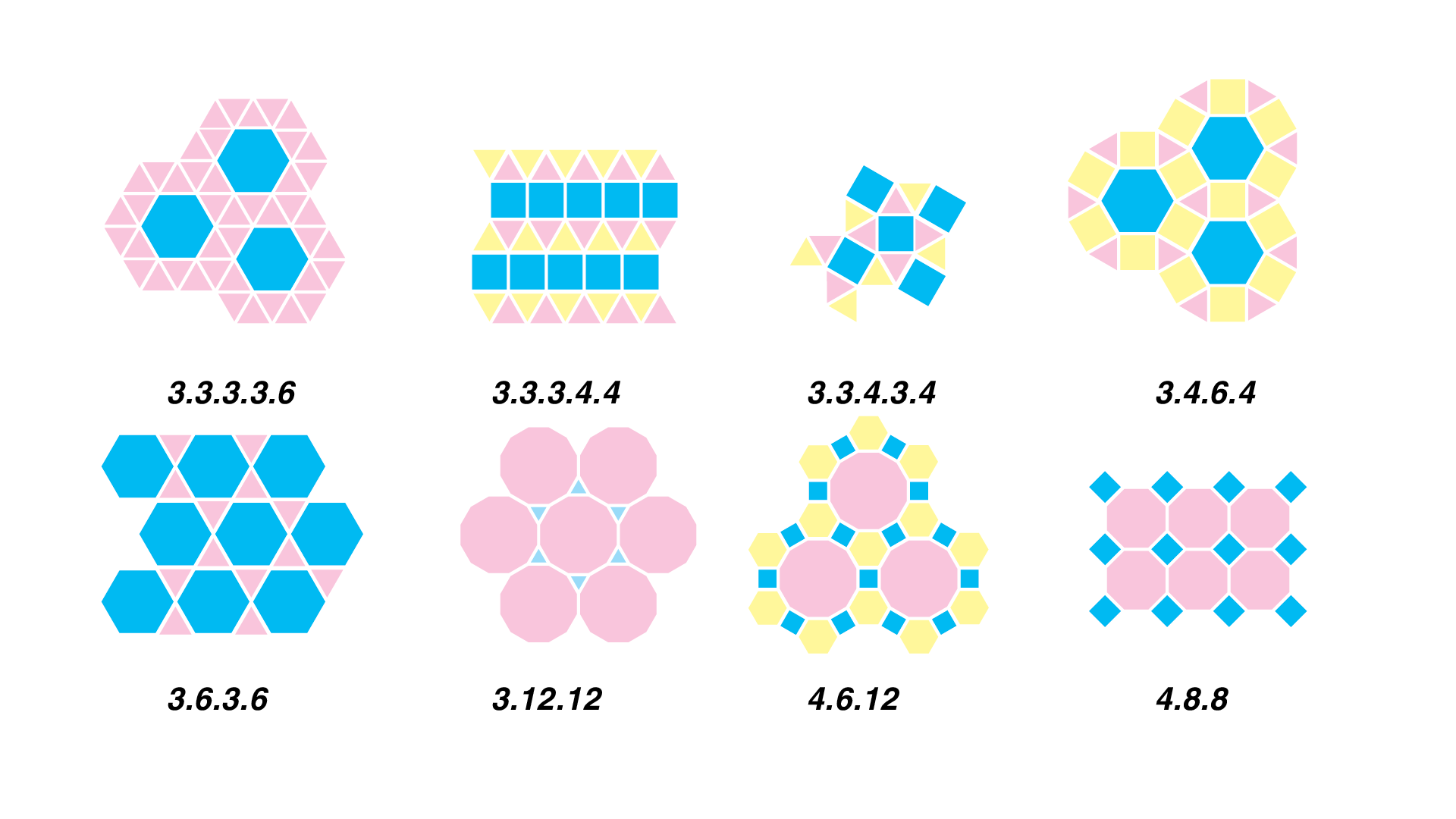

Irregular: These are tessellations in which the tiles are not all the same shape or size.Semi-Regular Polygons: These are tessellations in which all the tiles are regular polygons, but not necessarily the same size.Regular Polygons: These are tessellations in which all the tiles are regular polygons.Semi-Regular: These are tessellations in which all the tiles are the same shape, but not necessarily the same size.Regular: These are tessellations in which all the tiles are the same shape and size.Tessellations are patterns that repeat over and over again in a fixed shape. They are also commonly used in mathematics and computer graphics, where they can be used to create patterns and shapes that can be used in 3D modelling. Today, tessellations are still used in a variety of applications, from tile patterns in architecture to designs on fabric and wallpaper.Escher became particularly famous for his tessellated designs, which often incorporated optical illusions and intricate patterns. In the early 20th century, Dutch artist M.C. The use of tessellations continued to develop over the centuries, with artists and architects increasingly experimenting with more complex and intricate designs.These early tessellations were typically simple geometric shapes, such as squares and hexagons, that were repeated to cover a given space. Tessellations have been around for centuries, with the earliest known examples dating back to the Islamic world in the 12th century.In three dimensions, they can be used to create a variety of shapes, including domes, vaults, and arches.

In two dimensions, tessellations can be used to create intricate patterns on floors, walls, or other surfaces. They can be used to create a wide variety of structures, both two-dimensional and three-dimensional. Tessellations are a specific type of geometric pattern in which shapes are repeated in a regular fashion to form a unified whole. Tessellations and The Way They are Utilized in Structure These designs are often very intricate and complex. The Islamic architects used a variety of shapes and patterns to create beautiful tessellating designs. One of the most famous examples of this is the Islamic architecture. These quilts are very colorful and eye-catching.įinally, tessellations can also be found in architecture. Nevelson used a variety of shapes and colors to create tessellating patterns in her quilts. One of the most famous examples of this is the quiltwork of Louise Nevelson. This pattern is very strong and efficient, which is why it is used in the construction of beehives.Īnother common place to find tessellations is in art. The honeycomb is made up of hexagons that repeat to create a honeycomb-like pattern. The most famous example of this is the honeycomb. One of the most common places to find tessellations is in nature. Tessellations can be found in many different places, such as in nature, art, and architecture. This can be done by using different shapes, colors, or sizes. Tessellation is the process of creating a repeating pattern of shapes within a flat surface. When you are finished, the tessellation pattern should cover the entire plane. If you need to, you can add in extra squares to the grid to help you keep the shapes aligned. Be sure to make sure the shapes fit together perfectly, with no gaps or overlaps. Now you can start to fill in the squares on the grid with the shape you chose. The grid should be made up of squares or rectangles that are the same size as the shape you chose.

Next, you need to draw a grid on the plane where you want the tessellation to appear.

You can use any shape you like, but it is easiest to start with a simple shape like a square or a rectangle. Since January 2014 I have been writing a book about my tube piecing method and the project has grown into several books.The first step in creating a tessellation pattern is to choose a shape. hourglass blocks, seamless double and triple hourglass blocks, hexagons in halves, hexagons in triangles, tumbling blocks, paired peaks (my own design), Roman stripes, milky way, Indiana puzzle/snail's trail, Japanese puzzle, hearts and flower buds, rail fence, storm at sea, log cabin, courthouse steps. I have been developing tube piecing for several years and I have used it to make many projects very fast, efficiently, and accurately: all-over triangle quilts, zigzag patterns with triangles and parallelograms, flying geese, pinwheels, double pinwheels, ocean waves, LeMoyne stars and other stars, sawtooth border, bear's paw, lady of the lake, square in a square, square in a parallel square, diamonds in rectangles, 3x3 diamonds in a square, 2x3 diamonds in a rectangle, 2x5 parallelograms in a square.


 0 kommentar(er)
0 kommentar(er)
